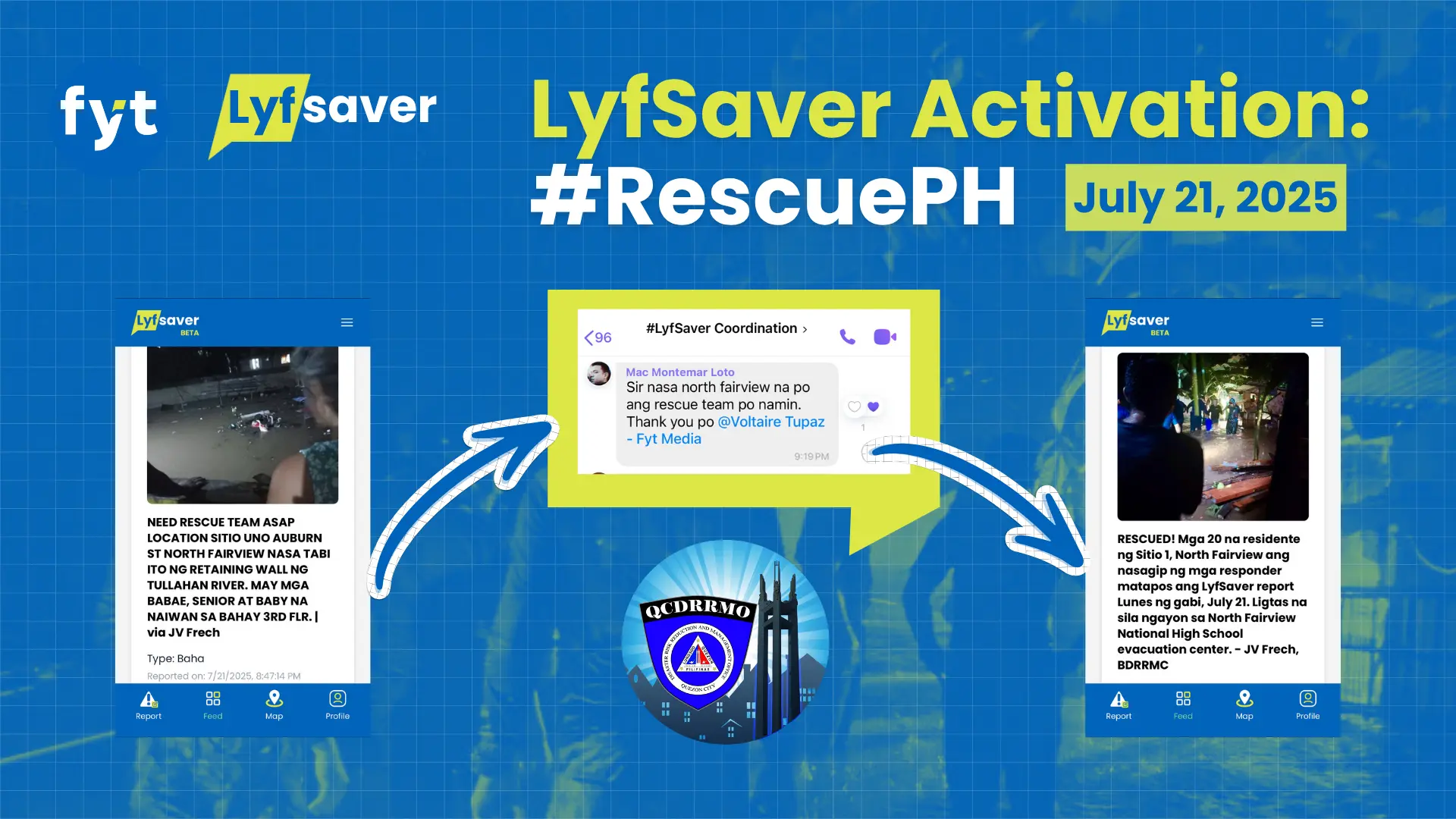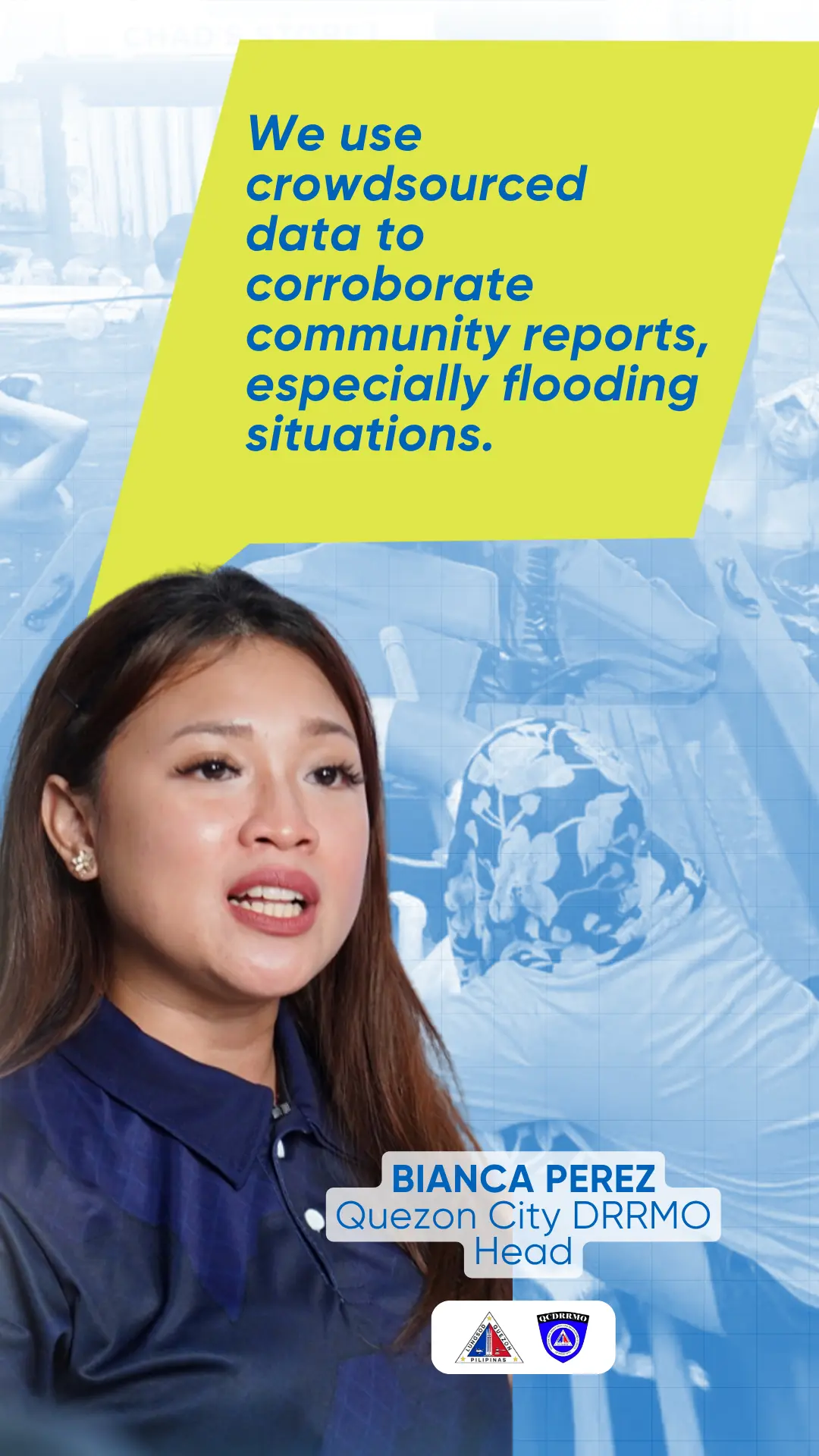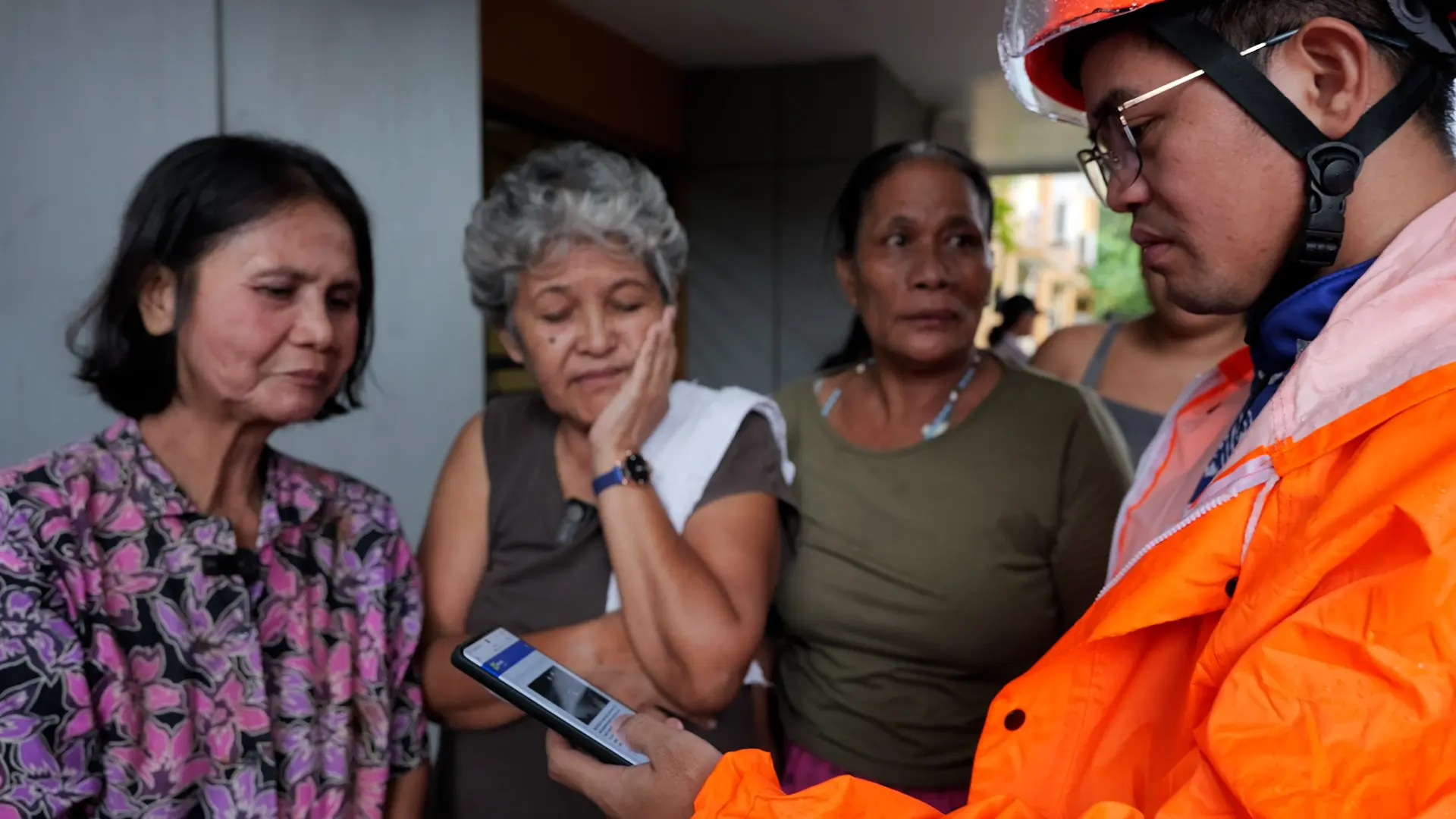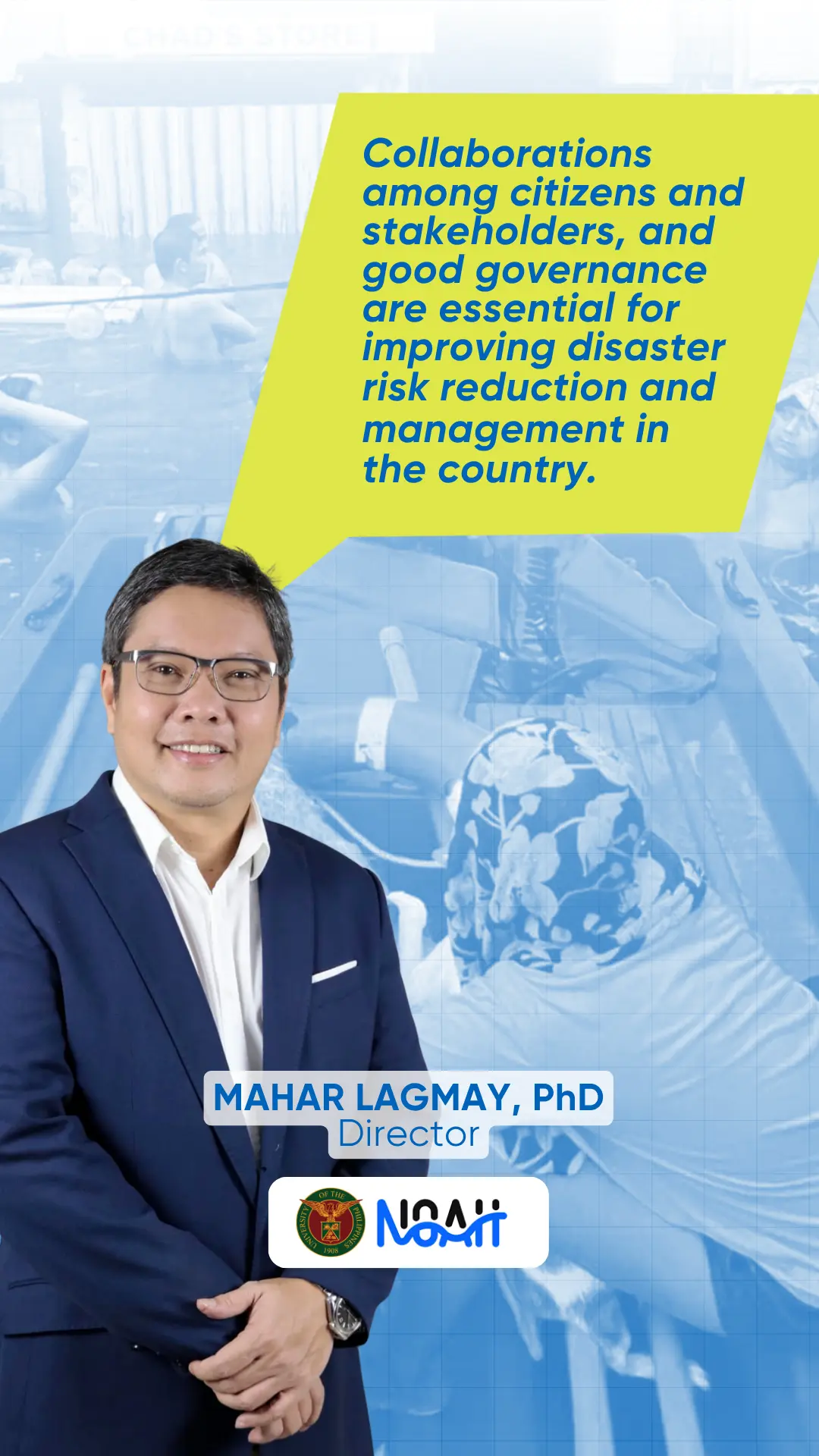
When record rains submerged a Quezon City neighborhood, a local app helped mobilize rescue and relief, one verified alert at a time.
QUEZON CITY, Philippines — The rain had not stopped for days.
By the time darkness fell over North Fairview on July 21, the river behind a neighborhood had breached its banks, swallowing entire blocks. In Sitio Uno, floodwaters rose so quickly that families barely had time to gather their children. Some sought refuge on rooftops. Others braved the rising waters.
Having just made rounds to warn his constituents, Jayve Frech Marigondon, a longtime community responder, knew his team was outmatched. The city was stretched thin. His own neighborhood was drowning.
So he pulled out his phone and posted a plea that quickly made its way to LyfSaver, a local crowdsourcing platform built for disaster response and climate action. He entered what he knew: who needed help, where they were, and how dire the situation had become. Then he went back to work, doing what he and his team could, house by house, alley by alley.
Within minutes, city responders began arriving. At least 20 people were pulled from waters that reached the second floor, including older adults, persons with disabilities, and children.
What might have been another forgotten flood story became something else: proof that verified information, when used right, can still cut through chaos and save lives.

The Philippines, ranked as the most disaster-prone country in the world by the 2024 World Risk Index, is struck by an average of 20 tropical cyclones each year, with 8 to 9 typically making landfall.
Marigondon’s worst fear had come true almost two months into the southwest monsoon.
On the night of July 21, PAGASA — the country’s weather bureau — raised a red rainfall warning over Metro Manila and neighboring provinces, the highest alert in its system. It meant over 30 mm of rain per hour, with severe flooding imminent.
Metro Manila received nearly a month’s rain in just four days. “Preliminary data shows we have already exceeded the normal rainfall for the entire month of July,” said Assistant Professor Bernard Alan Racoma of the UP Diliman Institute of Environmental Science and Meteorology.
“Maghanda-handa na (Start preparing),” warned Dr. Mahar Lagmay, Director of the University of the Philippines Nationwide Operational Assessment of Hazards (UP NOAH), as he posted flood projections for the affected areas.
Marigondon, who also chairs the Barangay Disaster Risk Reduction and Management Committee (BDRRMC), uses UP NOAH’s hazard maps to prepare. He keeps printed maps posted on the wall beside his desk — a constant, visual reminder of the risk.
That night, the red warning wasn’t just a color code; it was confirmation that the vulnerability he saw on the map was unfolding in real time.

Sitio Uno sits just behind the Tullahan River, downstream from La Mesa Dam. It’s one of the barangay’s lowest-lying areas, and one of the first to go under when floodwaters rise.
That night, at least 20 residents, including a baby, a child with a disability, and several elderly people, were stranded inside a three-story home near the riverbank.
With city teams overwhelmed, Marigondon feared his team wouldn't reach everyone in time.
LyfSaver became the lifeline. At 8:47 p.m., a rescue request was filed. By 9:28 p.m., responders from the Quezon City Disaster Risk Reduction and Management Office (QCDRRMO) were on-site with the Department of Public Order and Safety, the Traffic and Transport Management Department, and the Bureau of Fire Protection.
Seeing the quick response, nearby residents in East Fairview also sent alerts: “Nasa bubong na kami (We’re already on the roof),” one post read. “Bagong panganak ang isa – stranded (One just gave birth — she’s stranded).”
Volunteers monitored the thread, and shortly after, the same citizen confirmed: the rescue had reached them, too.
Since launching in August 2024, LyfSaver has received over 600 reports nationwide — on floods, landslides, earthquakes, and volcanic activity. In July 2025 alone, more than 200 alerts came in as the southwest monsoon and a series of storms battered the country.
“Your app works like our other official monitoring tools,” said Bianca Perez of QCDRRM. “It helps us confirm alerts and spot flooding trends.”
That night, North and East Fairview were not left behind.

At North Fairview High School, one of four evacuation centers, 335 evacuees sheltered that night. They included infants, lactating mothers, persons with disabilities, and senior citizens.
Marigondon, a father of four, stayed by their side. His voice cracked as he spoke, unable to hold back the tears. “We’re in the same situation. We all get flooded. The lives of these children, of every family — that’s us, too. My house is by the river. So if they’re flooded, I am too, Sir.”
Among those rescued was Grecile Calano, a 26-year-old mother who climbed to the third floor with her baby. Her eldest child asked, “Mama, mamamatay na ba tayo?” (Mama, are we going to die?)
Another family floated their infant on a piece of styrofoam and clung to a rope. When rescue finally arrived, the relief was immediate.

From the rooftop, 67-year-old Nida Bas stood still, watching the floodwaters rise. Calano captured the moment from behind — image that would later circulate with Marigondon’s LyfSaver post.
At the evacuation center, Bas smiled when shown the photo, amused by the technology, and grateful it had helped save her.
“Mabait sila (They were kind),” she said of the rescuers.“Napagsabihan din kami. Dapat, ‘pag sinabing evacuate, makinig na.” (We were also told off. When they say evacuate, we should listen.)
Marigondon had knocked on doors days before, warning them to move to higher ground.
“We did what we could,” he said. “But we’re up against nature.”

After the rescue, LyfSaver served as a bridge again, this time for relief.
Marigondon posted: “We need food, drinking water, clean clothes for evacuees at the four centers in North Fairview.”
Water concessionaire Maynilad was among the first to respond, dispatching a truck with potable water. “On the way na po ang aming team para magdala ng tubig,” came their reply. “Ingat po kayo.” (Our team is on the way to deliver water. Please take care.)
From there, the relief effort widened. What began as a local plea soon drew humanitarian groups — and the help of familiar faces.
Dingdong Dantes, a prominent actor and founder of the YesPinoy Foundation, joined the relief efforts by coordinating with GMA Network’s Kapuso Foundation to include North Fairview as one of its official aid distribution sites.
“Sa panahon ng bagyo at iba pang sakuna, tandaan: lahat tayo ay puwedeng maging lifesaver gamit lang ang mobile phone,” said Dantes, widely known as the “Kapuso Primetime King.”
(During storms and other disasters, remember: any of us can be a lifesaver with just a mobile phone.)
“Kung may report o photo kayo ng baha, landslide, o relief needs sa inyong lugar: I-LyfSaver n’yo na!”
(If you have a report or photo of flooding, landslides, or relief needs in your area — report it on LyfSaver!)
At least 1,500 evacuees — including many who were rescued from the floods — received food packs and hygiene kits through the foundation’s initiative, delivered with assistance from the Armed Forces of the Philippines.
“Every kind of help matters,” Dantes later said in an interview on 24 Oras, the primetime newscast of media giant GMA. “Each contribution goes a long way — from every Filipino, through bayanihan, our tradition of collective action.”
LyfSaver isn’t just a platform for emergencies. It’s a window into the country’s vulnerabilities, and a tool for planning and prevention.
“LyfSaver helps us verify our models,” said Dr. Likha Minimo of the UP Resilience Institute.
“When what’s on the ground doesn’t match the projections, something has changed – maybe a blocked drain, a new land development, or rainfall more extreme than expected.”

Dr. Lagmay of UP NOAH said platforms like LyfSaver are shaping the future of disaster risk reduction.
“On LyfSaver, when people participate, it raises their sense of ownership in solving the problem because they’re engaged,” he said.
He added that this is the power of citizen science: “Crowdsourcing fosters transparency in governance. That transparency, visible to the people because they’re participating, makes them care.”
“One essential aspect of crowdsourcing is openness. When the data is shared by the government and citizens alike, we all become accountable. And that leads to better governance.”
More than any feature, Lagmay stressed, the lesson is civic engagement, a shift from passive recipients to active partners in resilience.

Few understand that better than Marigondon.
“We stand by our responsibility,” he said. “We want people to know: we’re here. We’ll show up.”
He recalls that pleas for help were scattered or unanswered in past disasters. This time, one verified alert triggered a city-wide rescue.
“Now, with LyfSaver, people can be seen. Be heard. Be helped,” Marigondon said.
“Impormasyon, social media, internet — malaking bagay po ‘yan. Basta’t importante, tama ang impormasyon, accurate, at mas mabilis ang pag-responde para makapagsalba ng buhay.”
(Information, social media, and the internet — they all matter. But what matters most is having correct and accurate information to enable a faster response. That’s how we can save lives.)
Back in Sitio Uno, the flood came fast, but so did a quiet hope. A grandmother crossed a mango tree with trembling feet. A baby wrapped in a towel floated to safety. A post reached strangers and mobilized a city.
Because in a storm, panic spreads fast. But the correct information spreads faster – clear, trusted, and acted upon. And sometimes, that’s enough to turn a crowd into a lifeline. — fyt.ph (With reports from Shaina Aguilar, Vinz Calanuga, Wendell Clark, and Lyann Españoła)
LyfSaver is a community-powered platform built by Lyf in collaboration with Fyt Media, UP Resilience Institute, UP NOAH, and the YesPinoy Foundation, with support from International Media Support. It launched in beta during MakiFiesta 2024, in partnership with the Quezon City local government through the Disaster Risk Reduction and Management Office (DRRMO), Public Affairs and Information Services Department (PAISD), and Climate Change and Environmental Sustainability Department (CCESD).